What Makes Omkareshwar Temple a Must Visit Destination
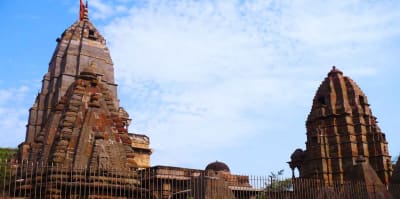
Being located on the banks of the clear waters of the river Narmada in Madhya Pradesh, Omkareshwar Temple is one of the twelve sacred Jyotirlingas and is the most sacred place of worship devoted to the Lord of the real Shiva in India.
It is a very highly sacred shrine and is supposed to be one of the places where lord Shiva himself had appeared in the form of a column of divine lights. Through centuries saints, sages and pilgrims have trodden upon its holy ground in desire to acquire divine favors and inner enlightenment.
The fact that Omkareshwar is located on the island of Mandhata that is distinctly shaped in the form of the sacred Hindu symbol of "ॐ” (Om) makes this temple even more fascinating. This geographical phenomenon is better than just the curiosity of this type, it supplements the spiritual effect of the temple adding more associations with space energies and the godly force.
However, the question arises, as to why you have to visit Omkareshwar Temple. The numerous reasons why Omkareshwar is a simply exceptional place worth visiting are listed here below, starting small with the amazing legends, and the grandiose architecture and ending with such environmental factors as the calming nature and the very strong spiritual essence.
One of the Twelve Jyotirlingas
 The major reason to make Omkareshwar special is the fact that it comprises the twelve Jyotirlingas which are the most sacred lord Shiva temples of India. Hindus presume that all these twelve Jyotirlingas are self-disclosed and Spiritually play a significant role. Pilgrims believe that Omkareshwar visit can help a pilgrim offload his/her sins and can bring inner peace, and spiritual upliftment.
The major reason to make Omkareshwar special is the fact that it comprises the twelve Jyotirlingas which are the most sacred lord Shiva temples of India. Hindus presume that all these twelve Jyotirlingas are self-disclosed and Spiritually play a significant role. Pilgrims believe that Omkareshwar visit can help a pilgrim offload his/her sins and can bring inner peace, and spiritual upliftment.
Omkareshwar is interestingly acclaimed to be unique because this is the place where two temples dedicated to Lord Shiva Omkareshwar and Amareshwar exist. Of course, both are sacred to an equally high degree, still, the Omkareshwar Temple is regarded as the key Jyotirlinga around and the fact that the two temples were placed at identical locations increases the religious aspect of pilgrimage.
The Island is in the Shape of ‘Om’
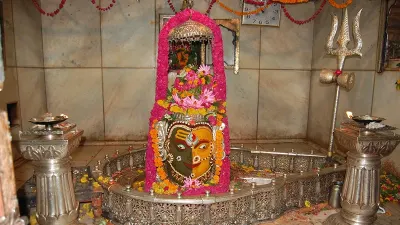 The island on which the temple is situated is named Mandhata Island and is in the shape of the religious symbol of ॐ (Om) only seen above. This geographic natural wonder contributes to the mystic atmosphere of the place. The Om is a universal sound concept in Hinduism, the universe's birth, and the shape of the island, in turn, supports the spiritual energy connected with the temple.
The island on which the temple is situated is named Mandhata Island and is in the shape of the religious symbol of ॐ (Om) only seen above. This geographic natural wonder contributes to the mystic atmosphere of the place. The Om is a universal sound concept in Hinduism, the universe's birth, and the shape of the island, in turn, supports the spiritual energy connected with the temple.
The pilgrims usually proceed through the parikrama path which is circularly walking around the island and it can be considered as a spiritual and also scenic journey. Devotees can feel a meditative sense of nature and god since the Narmada flows calmly around the island.
Majestic Temple Architecture
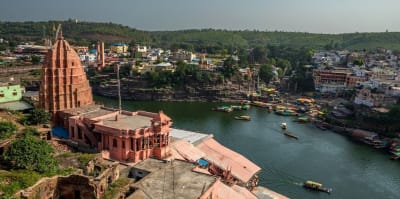 The Omkareshwar Temple is constructed using the Nagara style of architecture which is greatly decorated with beautiful carvings, high shikhara and a building that has stood over many centuries. The ancient Hindu religious works are recounted in the stone walls, whereas the highest revered Shiva Linga is kept in the sanctum sanctorum.
The Omkareshwar Temple is constructed using the Nagara style of architecture which is greatly decorated with beautiful carvings, high shikhara and a building that has stood over many centuries. The ancient Hindu religious works are recounted in the stone walls, whereas the highest revered Shiva Linga is kept in the sanctum sanctorum.
Once you enter, the scent of incense, the wail of the priests and the monotonous bells transport you into an atmosphere of devotion. Besides representing religious art, the architecture itself represents the rich Indian architectural tradition, which has been guarded throughout the ages.
Spiritual Vibes and Rituals
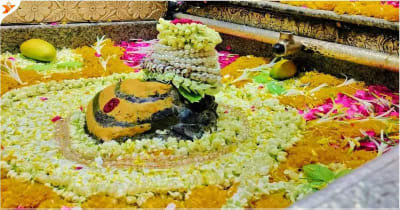 As a believer or a peace-seeker, one can feel the spiritual power of Omkareshwar. The usual day-to-day activities are:
As a believer or a peace-seeker, one can feel the spiritual power of Omkareshwar. The usual day-to-day activities are:
Abhishekam (ritual bathing of the Shiva Linga) Aarti (serving lamps and song devotions) Mahashivratri special prayers
The surreal experience is that of the evening aarti along the riverside particularly. The number of floating lamps on the Narmada in the air encircled by chants is a wonderful to-be-remembered image, a visual and spiritual delight that cannot be forgettable.
Legends and Mythology
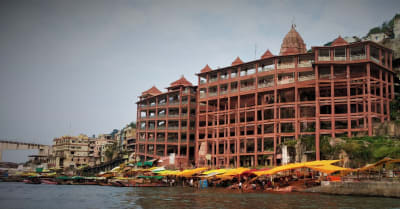
The significance of Omkareshwar rests deep in mythological narrations. According to one of the legends, lord Shiva manifested himself here to kill the powerful Narakasura, the demon king and thus the appearance here was of a Jyotirlinga. There is another legend that associates the temple with the legend of King Mandhata who was a great worshipper of Shiva and hence the island is named after King Mandhata.
These myths are not a fable, they exist in the songs that are sung by the priests, in murals on the temple walls, and in tales of local people. They make history and faith come to life to tourists, thus, adding a mystical value to the temple.
Picturesque Natural Surroundings
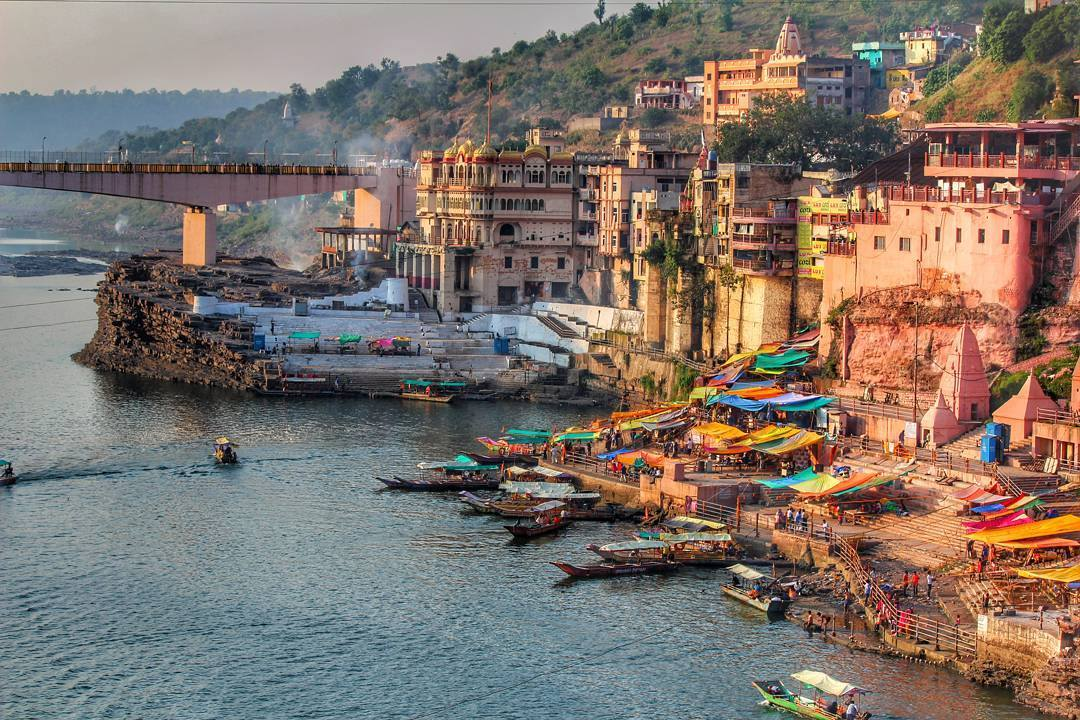
Other than its religious significance, Omkareshwar is a paradise for nature lovers. It is a relaxing place surrounded by numerous big bushes the winding course of the Narmada River and the small waterfalls and hills around.
Attractions around the area are: Satmatrika Temples, Kedareshwar Temple, Gauri Somnath Temple and Gomukh Ghat.
To the eco-tourists, boating is a great way of getting the best view of the river and temples from a different angle.
Accessibility and Connectivity
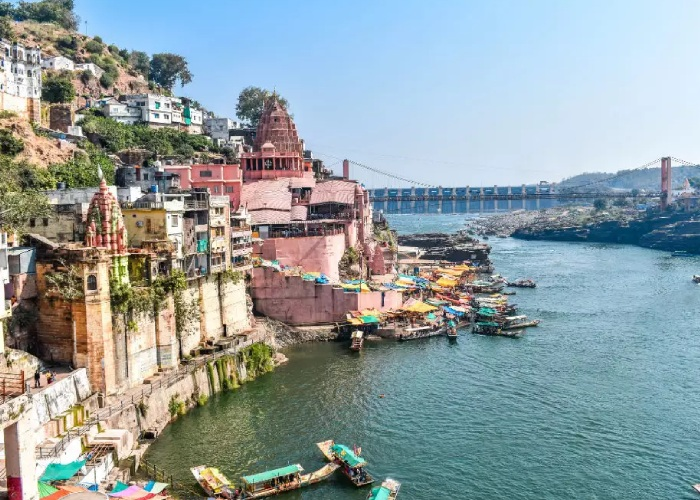
The holy Omkareshwar is connected both by road and rail, thus it is easily accessible to pilgrims as well as other tourists. It is about 77 km away from Indore the largest City in Madhya Pradesh that also contains an international airport. It is also a beautiful place that will make the trip satisfying too because we have to travel through a beautiful route through the hills and the river valleys to get there.
Festivals and Cultural Celebrations
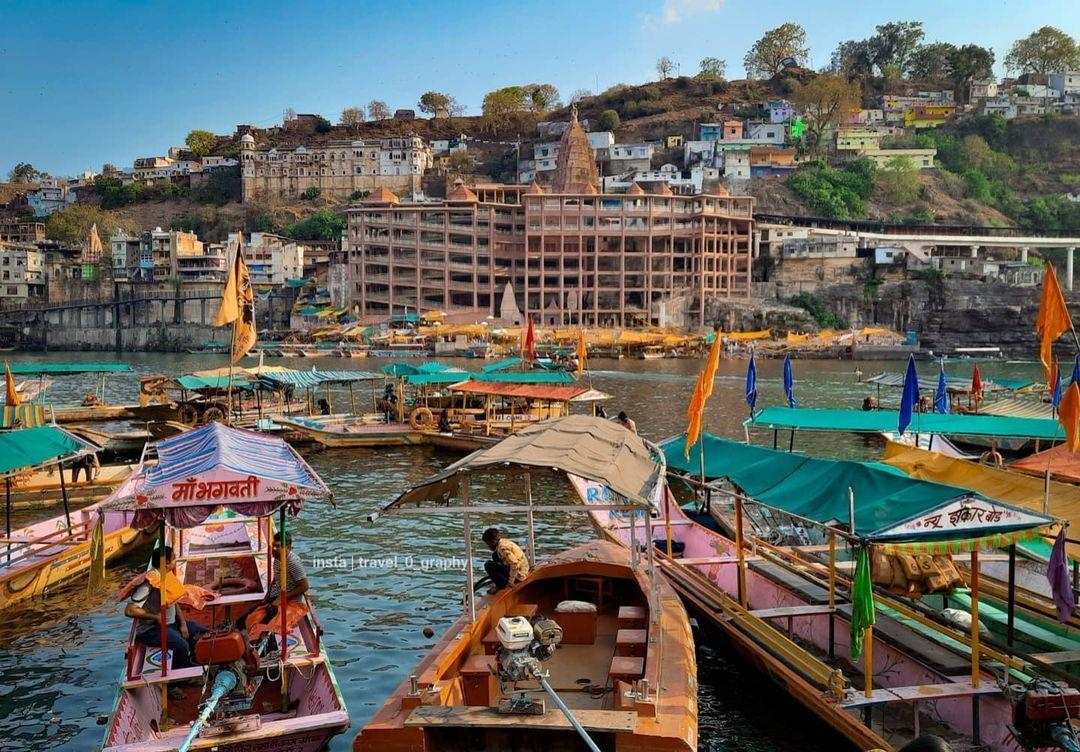 The festivals in Hinduism constitute a vast domain, and during all these festivals, several small and great fairs are held in Omkareshwar. These attract devotees from far and near, helping create an atmosphere conducive to spiritual experiences. Some of the festivals among such celebrated occasions are:
The festivals in Hinduism constitute a vast domain, and during all these festivals, several small and great fairs are held in Omkareshwar. These attract devotees from far and near, helping create an atmosphere conducive to spiritual experiences. Some of the festivals among such celebrated occasions are:
Mahashivratri - This involves spending the whole night praying and singing and performing elaborate rituals. Shravan Month - A sacred time of the year to the Shiva worshipers, that sees the pilgrims in thousands. Narmada Jayanti - The yatra and rituals of Narmada Jayanti are celebrated along the river.
A trip during this time will enable you to experience the cultural colorfulness of Omkareshwar and the emotional devotion of the visitors.
Peaceful Retreat from Modern Life
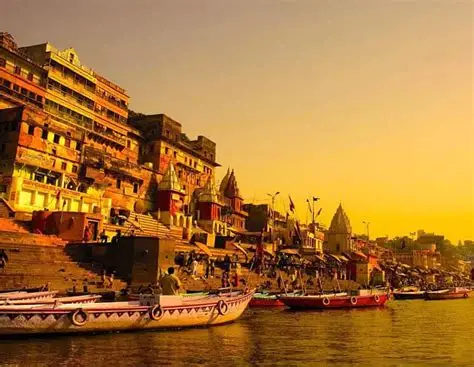
In the world today fraught with frenetic activities, visiting places such as Omkareshwar provides one of the much-desired spiritual and mental cleansings. No city rush, the order of rites, and the peaceful natural environment make it perfect for those who want to be left in solitude, in deep meditation, or who want to contemplate.
People who practice yoga, seekers of spirituality, and even ordinary tourists get relief here-evidence that the aura generated by the temple is not confined to religion.
A Journey of the Soul
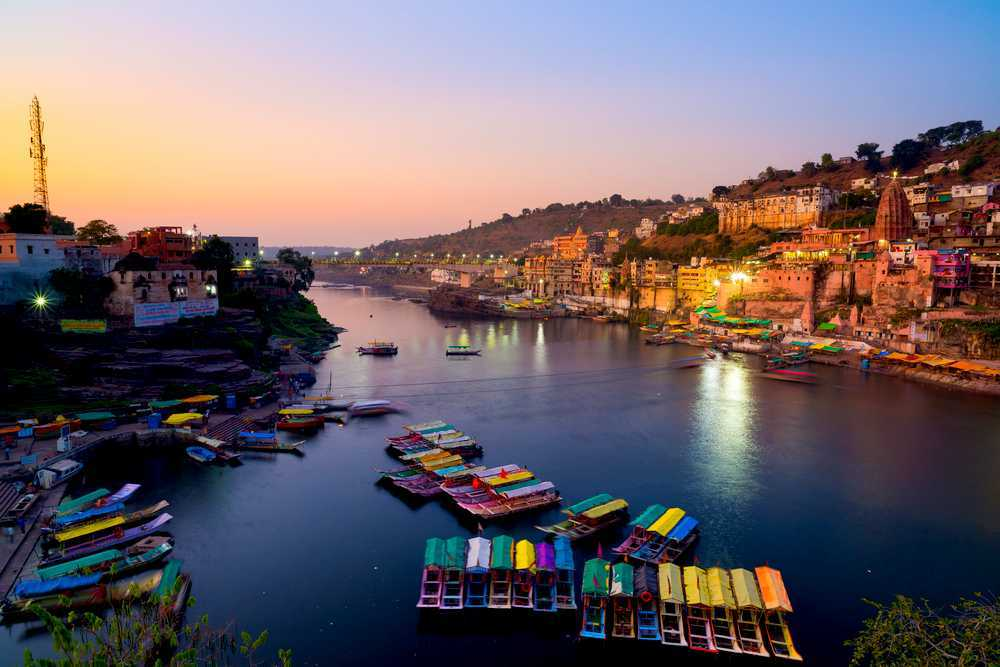
And most especially, a visit to Omkareshwar is an inner pilgrimage. Be it in the offering of prayers, parikrama, hearing the temple bells ring on the other side of the river, or simply watching the sun go down the ghats; every moment, you are driven closer to understanding the self, faith and existence.
Conclusion
Omkareshwar is not some sight-seeing place but a place where one feels it. Whether you are on the parikrama route or down at the sanctum praying your lungs out or just gazing at the Narmada in the evening as it gets colored by a hundred lighted diyas floating on water in aarti, you feel something deeper here.
It is where the time itself is slowed, where nature and God can be found in a state of perfect relaxation. Nobody will assure me that they do not find a reason to come back, or at least recall, as a spiritual seeker and yoga practitioner I am, a spiritual, yoga practitioner: a casual visitor and a history enthusiast.
In the end, it is a pilgrimage to Omkareshwar which is a pilgrimage to oneself. It brings about thoughts, meditation and dedication, and reminds us that occasionally, the way to comprehend the universe starts with comprehending the self.